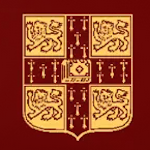Chambéry, a city of France, capital of the department of Savoie, pleasantly situated in a fertile district, between two hills, on the rivers Leysse and Albane, 79 m. by rail S.S.W. of Geneva. Pop. (1906) town, 16,852; commune, 23,027. The town is irregularly built, and has only two good streets—the Place Saint-Léger and the Rue de Boigne, the latter being named after General Benoît Boigne (1741-1830), who left a fortune of 3,400,000 francs (accumulated in India) to the town. The principal buildings are the cathedral, dating from the 14th and 15th centuries; the Hôtel-Dieu, founded in 1647; the castle, a modern building serving as the prefecture, and preserving only a great square tower belonging to the original structure; the palace of justice, the theatre, the barracks, and the covered market, which dates from 1863. Several of the squares are adorned with fountains; the old ramparts of the city, destroyed during the French Revolution, have been converted into public walks; and various promenades and gardens have been constructed. Chambéry is the seat of an archbishop (raised to that dignity from a bishopric in 1817) and of a superior tribunal. It has also a Jesuit college, a royal academical society, a society of agriculture and commerce, a public library with 60,000 volumes, a museum (antiquities and paintings), a botanic garden, and many charitable institutions. It manufactures silk-gauze, lace, leather and hats, and has a considerable trade in liqueurs, wine, lead, copper and other articles. Overlooking the town on the north is the Rocher de Lémenc, which derives its name from the Lemincum of the Romans; and in the vicinity is Les Charmettes, for some time (1736-1740) the residence of Rousseau.
The origin of Chambéry is unknown, but its lords are mentioned for the first time in 1029. In 1232 it was sold to the count of Savoy, Thomas I., who bestowed several important privileges on the inhabitants. As capital of the duchy of Savoy, it has passed through numerous political vicissitudes. Between 1536 and 1713 it was several times occupied by the French; in 1742 it was captured by a Franco-Spanish army; and in 1792 it was occupied by the Republican forces, and became the capital of the department of Mont Blanc. Restored to the house of Savoy by the treaties of Vienna and Paris, it was again surrendered to France in 1860. Among the famous men whom it has given to France, the most important are Vaugelas (1585-1650), Saint-Réal (1639-1692), and the brothers Joseph (1754-1821) and Xavier (1763-1852) de Maistre.
CHAMBORD, HENRI CHARLES FERDINAND MARIE DIEUDONNÉ Comte de (1820-1883), the “King Henry V.” of the French legitimists, was born in Paris on the 29th of September 1820. His father was the duc de Berry, the elder son of the comte d’Artois (afterwards Charles X.); his mother was the princess Caroline Ferdinande Louise of Naples. Born seven months after the assassination of his father, he was hailed as the “enfant du miracle,” and was made the subject of one of Lamartine’s most famous poems. He was created duc de Bordeaux, and in 1821, as the result of a subscription organized by the government, received the château of Chambord. He was educated by tutors inspired by detestation of the French Revolution and its principles, and from the duc de Damas in particular imbibed those ideas of divine right and of devotion to the Church to which he always remained true. After the revolution of July, Charles X. vainly endeavoured to save the Bourbon cause by abdicating in his favour and proclaiming him king under the title of Henry V. (August 2, 1830). The comte de Chambord accompanied his grandfather into exile, and resided successively at Holyrood, Prague, and Görz. In 1841, during an extensive tour through Europe, he broke his leg—an accident that resulted in permanent lameness. The death of his grandfather, Charles X., in 1836, and of his uncle, the duc d’Angoulême, in 1844, left him the last male representative of the elder branch of the Bourbon family; and his marriage with the archduchess Maria Theresa, eldest daughter of the duke of Modena (November 7, 1846), remained without issue. The title to the throne thus passed to the comte de Paris, as representative of the Orleans branch of the house of Bourbon, and the history of the comte de Chambord’s life is largely an account of the efforts made to unite the Royalist party by effecting a reconciliation between the two princes. Though he continued to hold an informal court, both on his travels and at his castle of Frohsdorf, near Vienna, yet he allowed the revolution of 1848 and the coup d’état of 1851 to pass without any decisive assertion of his claims. It was the Italian war of 1859, with its menace to the pope’s independence, that roused him at last to activity. He declared himself ready “to pay with his blood for the triumph of a cause which was that of France, the Church, and God himself.” Making common cause with the Church, the Royalists now began an active campaign against the Empire. On the 9th of December 1866 he addressed a manifesto to General Saint-Priest, in which he declared the cause of the pope to be that of society and liberty, and held out promises of retrenchment, civil and religious liberty, “and above all honesty.” Again, on the 4th of September 1870, after the fall of the Empire, he invited Frenchmen to accept a government “whose basis was right and whose principle was honesty,” and promised to drive the enemy from French soil. These vague phrases, offered as a panacea to a nation fighting for its life, showed conclusively his want of all political genius; they had as little effect on the French as his protest against the bombardment of Paris had on the Germans. Yet fortune favoured him. The elections placed the Republican party in a minority in the National Assembly; the abrogation of the law of exile against the royal family permitted him to return to his castle of Chambord; and it was thence that on the 5th of July 1871 he issued a proclamation, in which for the first time he publicly posed as king, and declared that he would never abandon the white standard of the Bourbons, “the flag of Henry IV., Francis I., and Joan of Arc,” for the tricolour of the Revolution. He again quitted France, and answered the attempts to make him renounce his claims in favour of the comte de Paris by the declaration (January 25, 1872) that he would never abdicate. In the following month he held a great gathering of his adherents at Antwerp, which was the cause of serious disturbances. A constitutional programme, signed by some 280 members of the National Assembly, was presented for his acceptance, but without result. The fall of Thiers in May 1873, however, offered an opportunity to the Royalists by which they hastened to profit. The comte de Paris and the prince de Joinville journeyed to Frohsdorf, and were formally reconciled with the head of the family (August 5). The Royalists were united, the premier (the duc de Broglie) an open adherent, the president (MacMahon) a benevolent neutral. MM. Lucien Brun and Chesnelong were sent to interview the comte de Chambord at Salzburg, and obtain the definite assurances that alone were wanting. They returned with the news that he accepted the principles of the French Revolution and the tricolour flag. But a letter to Chesnelong, dated Salzburg, 27th of October, declared that he had been misunderstood: he would give no guarantees; he would not inaugurate his reign by an act of weakness, nor become “le roi légitime de la Révolution.” “Je suis le pilote nécessaire,” he added, “le seul capable de conduire le navire au port, parce que j’ai mission et autorité pour cela.” This outspoken adherence to the principle of divine right did credit to his honesty, but it cost him the crown. The duc de Broglie carried the septennate, and the Republic steadily established itself in popular favour. A last effort was made in the National Assembly in June 1874 by the duc de la Rochefoucauld-Bisaccia, who formally moved the restoration of the monarchy. The comte de Chambord on the 2nd of July issued a fresh manifesto, which added nothing to his former declarations. The motion was rejected by 272 to 79, and on the 25th of February 1875 the Assembly definitely adopted the Republic as the national form of government. From this time the comte de Chambord, though continuing to publish letters on political affairs, made no further effort to regain the throne. He died at Frohsdorf on the 24th of August 1883.
See Manifestes et programmes politiques de M. le comte de Chambord, 1848-1873 (1873), and Correspondance de la famille royale et principalement de Mgr. le comte de Chambord avec le comte de Bouillé (1884). Of the enormous literature relating to him, mention may be made of Henri V et la monarchie traditionnelle (1871), Le Comte de Chambord étudié dans ses voyages et sa correspondance (1880), and Henri de France, by H. de Pène (1885).


